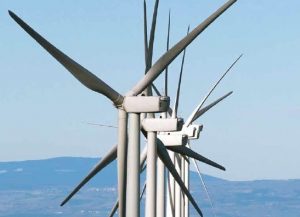Greater output, less weight, improved production and installation processes. Siemens intends to apply these approaches to reduce the costs of offshore wind power in the coming years. The company is presented its new 4MW and 6MW wind turbines at the EWEA Offshore Trade fair in Frankfurt/Main, Germany in November. At the conference accompanying the trade fair, high-ranking representatives from Siemens presented the strategies the company plans to apply to achieve these cost reductions in the coming years.
“We want to reduce the levelized cost of energy (LCOE) for offshore wind power by up to 40 percent before the end of the decade”, said Siemens Wind Power CTO Henrik Stiesdal. “This means that starting as early as 2020, we will offer our customers technologies that allows offshore wind power to be produced for less than 10 euro cents per kilowatt hour.” Siemens’ technical innovations demonstrate significant steps toward efficiency enhancement. The nacelle and rotor of the new SWT-6.0-154 6MW wind turbine are around one-third lighter than that of similar systems. The direct-drive technology used in the 6MW turbine, which eliminates the need for a gearbox, plays a major role in reducing the cost of energy. The weight advantages gained through this enhance economic viability across all project phases, from fabrication to transport, foundations and installation all the way up to operation.
Similar benefits are also offered by the improved offshore geared units with a capacity of 4MW. These units—the SWT-4.0-120 and SWT-4.0-130 —combine the technology used in the more than 900 units of the most widely built offshore wind turbine with an increase in performance from the upgraded generator. In addition, the 130 m rotor has innovative, 63-meter-long “aeroelastic” rotor blades. These blades are designed to be flexible under high wind loads and can be produced with up to 20 percent reduced mass compared to conventional blades.
Stiesdal said a wide range of social perspectives must also be taken into account in the offshore wind power cost debate. “Environmental benefits, energy supply stability and positive impacts on domestic jobw markets are frequently underestimated in the discussion on renewable energy sources,” Stiesdal said. “These aspects, which influence the true ‘society’s cost of energy’, should also be incorporated into the ongoing cost debate.” Only in this manner would a fair assessment of offshore wind energy as compared to conventional or other renewable energy sources be possible.
For more information, visit www.siemens.com.



























